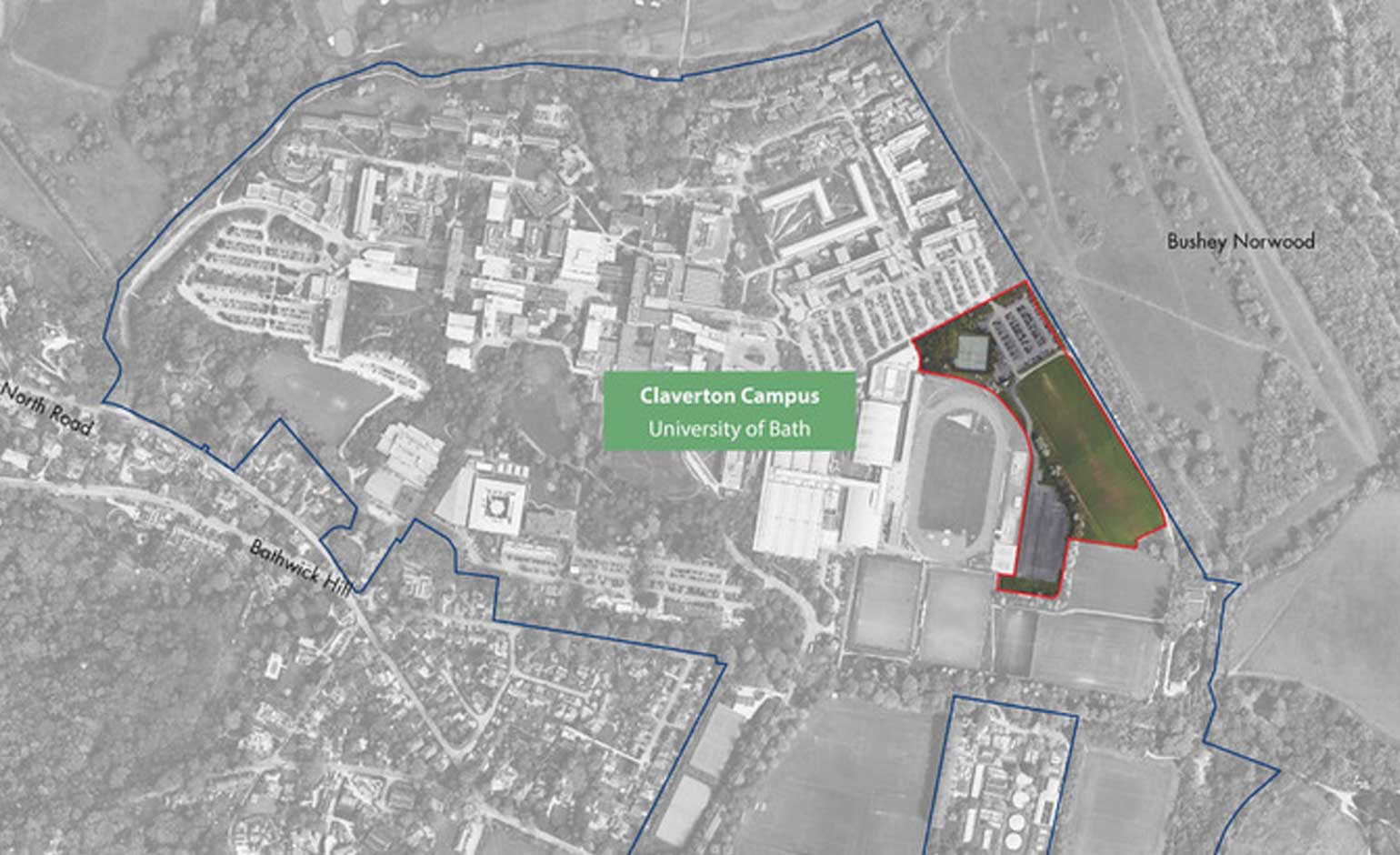The University of Bath has submitted plans to house 962 more students at its Claverton Down campus, which it says will ease pressure on housing in the city.

The proposed development site at the Claverton Down campus | Image © University of Bath
A report with the application submitted to Bath & North East Somerset Council says the university has 21,340 students – 15,955 undergraduates and 5,385 postgraduates – and 3,800 staff.
The current on-campus student accommodation is said to be “finite”, with the delivery of new accommodation having been limited over recent years.
That has meant that there has been an increasing need to house students off-campus, with significant pressure and demand for housing within the city as a result.
The result is that the university has had to depart from its long-term desire to offer all eligible first-year undergraduates a room on campus. It is currently estimated that around 1,000 first-year undergraduates are living within the city, which is in addition to the need for housing for subsequent years and postgraduates.
The application adds that more student accommodation on campus will support the university’s future growth aspirations whilst minimising impacts on the city, notably the housing market.
The proposal is the result of a series of consultations with the public, statutory bodies, and other stakeholders. The proposed new blocks are four and five storeys and the university says its net carbon zero commitments are reflected in the proposals, which will seek Passivhaus certification for energy efficiency.
The 11-acre site for development lies to the eastern boundary of the campus, bordering the Bushey Norwood area, which forms part of the Bath Skyline walking route.
The site is in the Cotswolds National Landscape (formerly the Cotswolds Area of Outstanding Natural Beauty) and was removed from the Green Belt in the council’s 2007 Local Plan to facilitate the further development of the campus. Land immediately east of the site remains in the Green Belt.
The application says the site development strategy has been slightly amended to include the current East Car Park overflow area. The university says that whilst it is recognised that the proposed 962 rooms exceed the 870 bedrooms previously referred to, the policy does not set a cap to the number of bed spaces.
The design of the proposed accommodation is has been shaped by student experience and prioritises equality, diversity, and inclusion. A significant increase in neurodiverse students (up by 297%) and students with mental health challenges (up by 181%) since the 2020/21 academic year reflects the growing need for supportive and adaptable spaces post-Covid.
The majority of students with additional requirements applying for accommodation want to live on campus (63%).
The proposed development will result in the loss of the East Overflow Car Park south of the site, and the “reconfiguration” of the East Extension Car Park to the north.
The application says this is considered to be an “appropriate balance” between discouraging private car use and encouraging sustainable travel, whilst retaining an appropriate level of parking for those who need it.
In total the development will result in the net loss of 317 car parking spaces across campus. A transport statement says the campus has a large range of amenities and facilities for students, with a significant level of cycle parking and numerous locations from which to hire e-scooters and e-bikes. It also says that the campus is well-served by buses.
The development will see the loss of the existing grass playing pitches, which are said to be of poor quality and condition, and two clay tennis courts not in use and in a “poor condition”.
This loss has been offset through the delivery of an artificial turf pitch and multi-use games area to the south of the site.
The loss of the existing tennis courts will be compensated for through the delivery of two new padel courts.
Councillor Toby Simon (Bathwick, Liberal Democrat) has already asked that the proposals are ‘called in’ to be decided by the planning committee, rather than delegated to council planning officers.
He says: “This is such a major development, not least because of its significant implications for the city as a whole in terms of student numbers, that it should be discussed by the committee.”
The planning reference is 25/03757/EFUL and the deadline for comments is 16th November.



